
Observing


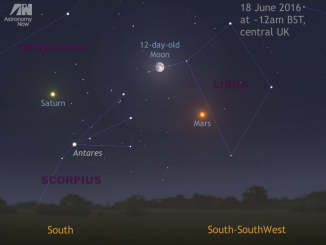
See the Moon’s midnight rendezvous with Mars and Saturn
We may be losing Jupiter in the west at dusk, but two other planets are well placed in the late evening. Skywatchers in the UK and Western Europe should look low in the southern sky around 12am local time on 17, 18 and 19 June to see the waxing gibbous Moon in the vicinity of planets Mars and Saturn, plus first-magnitude star Antares in the constellation of Scorpius.
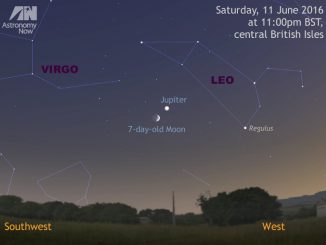
See the Moon and Jupiter get close on 11 June
As dusk fades to dark on Saturday, 11 June, observers in the British Isles should look low in the western sky to see the 7-day-old waxing crescent Moon and Jupiter less than 3 degrees apart, within the same binocular field of view. Get your observations in now as the solar system’s largest planet is poised to leave the celestial stage during the summer.
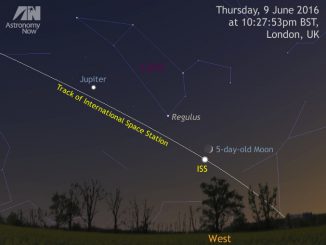
See the International Space Station over the UK
In recent nights, observers in the UK and Western Europe have seen the International Space Station (ISS) as a bright naked-eye ‘star’ moving slowly across the sky from west to east. On Thursday, 9 June, London is favoured for some close approaches of the ISS to the Moon, Jupiter and Saturn. If you see the Station, spare a thought for Tim Peake and the Expedition 47 crew on board!
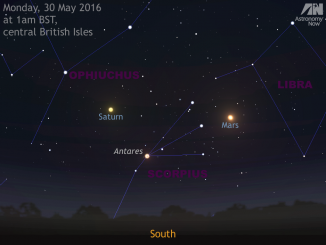
See Mars at its closest for over a decade and Saturn at opposition
On the evening of Monday, 30 May, Mars is closer to Earth than at any time since 30 October 2005. This begs the question: just how close can Mars get? Ade Ashford gives you an overview of close Martian oppositions past, present and future. Also, Friday, 3 June sees the opposition of Saturn, the other planet visible low in the south around midnight.
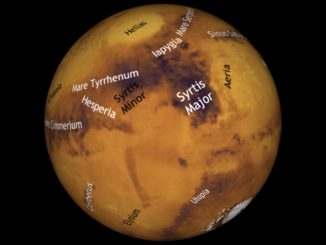
Mars opposition 2016: Which side of the Red Planet is visible tonight?
On the morning of Sunday, 22 May planet Mars reached opposition in the constellation of Scorpius and is closest to the Earth on 30 May — its best showing in a decade for Southern Hemisphere observers. As seen from the UK the Red Planet will be low in the south at 1am BST, but on nights of good seeing surface detail will be visible in amateur telescopes. Use our interactive Mars Mapper to identify its features.

Make the most of your Jupiter observations during May
Now two months past opposition, the solar system’s largest planet, Jupiter, is highest in the UK sky before sunset and is already descending in the southwest by the time the sky is dark enough to observe it. However, there is still phenomena of the Galilean moons to see and the planet’s Great Red Spot, so make the most of your Jovian observations while you can during May.

How and when to observe the transit of Mercury on 9 May
On Monday, 9 May just after midday BST, suitably equipped observers in the British Isles can witness the start of a 7½-hour spectacle that hasn’t been seen for almost a decade — the silhouette of innermost planet Mercury crossing the face of the Sun. Here’s our online guide to observing this fascinating and comparatively rare event in complete safety.
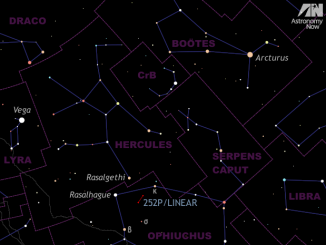
See Comet 252P/LINEAR in a moonless sky
On the afternoon of 21 March, Comet 252P/LINEAR brushed by Earth just 14 lunar distances away. The comet’s separation from Earth now exceeds 20 million miles, but it’s still a suitable target for binoculars and small telescopes — if you know exactly where to look. Here’s our UK observing guide for 252P/LINEAR in the constellation Ophiuchus between midnight and moonrise over the coming week.
